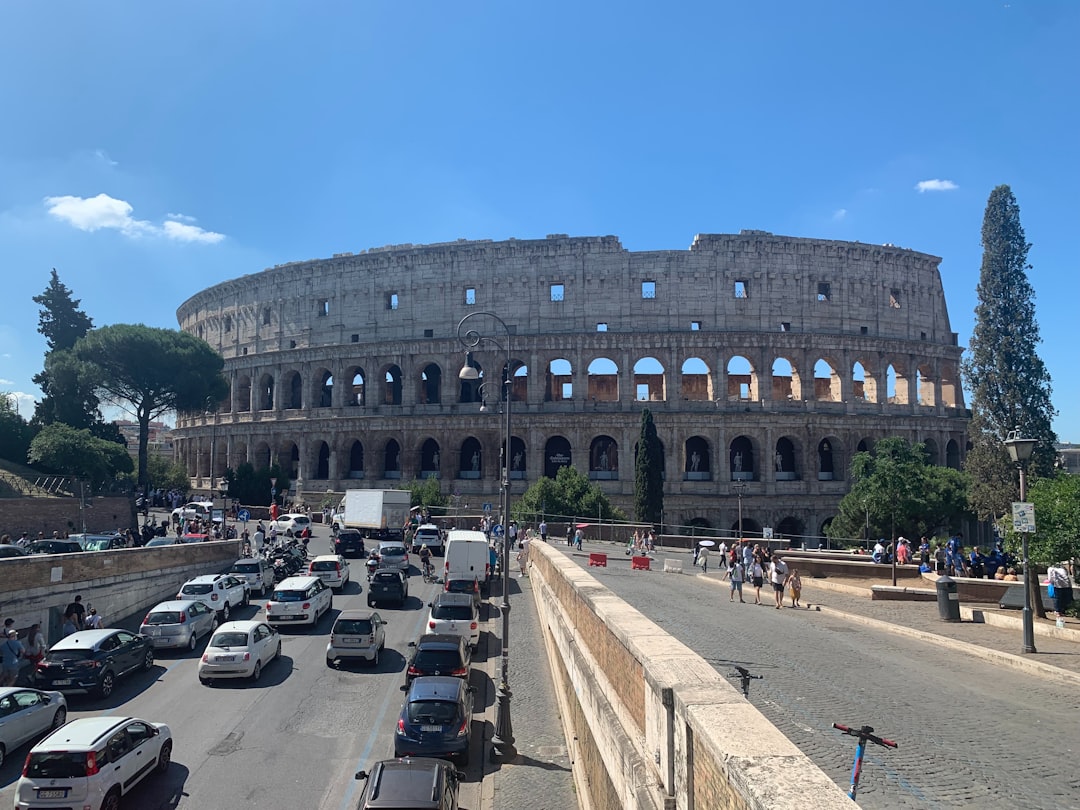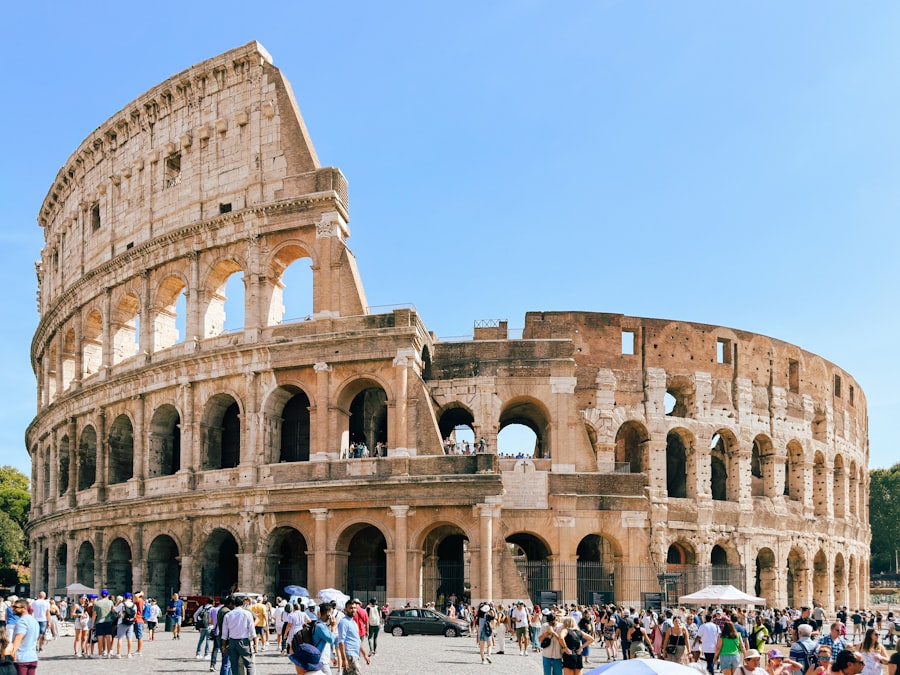
Italy, a country that has long captivated the hearts and minds of travelers, is a tapestry woven with threads of history, culture, and breathtaking landscapes. From the ancient ruins of Rome to the serene canals of Venice, Italy offers a unique blend of the past and present, making it a destination that appeals to a wide array of interests. The country is not only known for its historical significance but also for its stunning natural beauty, ranging from the rolling hills of Tuscany to the dramatic cliffs of the Amalfi Coast.
Each region boasts its own distinct character, traditions, and culinary delights, inviting visitors to explore its diverse offerings. The allure of Italy lies in its ability to transport visitors through time. Walking through the cobblestone streets of Florence or standing in awe before the grandeur of the Vatican, one cannot help but feel a connection to the myriad of stories that have unfolded in these spaces over centuries.
Italy’s rich history is palpable in its architecture, art, and even in the very air that surrounds its ancient cities. This enchanting country is not merely a destination; it is an experience that engages all the senses and leaves an indelible mark on the soul.
Key Takeaways
- Italy is a country with a rich history and stunning natural beauty, making it a popular destination for travelers from around the world.
- From the iconic Colosseum in Rome to the picturesque Amalfi Coast, Italy is home to a wide range of must-see attractions that showcase its diverse landscapes and historical significance.
- Italian cuisine is renowned for its delicious flavors and regional specialties, offering a culinary experience that is not to be missed for food enthusiasts.
- Italy’s cultural heritage is evident in its art, architecture, and music, with famous works by renowned artists and composers found throughout the country.
- Beyond the well-known tourist spots, Italy also boasts hidden gems and off-the-beaten-path destinations that offer a more authentic and unique travel experience.
- When traveling in Italy, it’s important to consider transportation options, accommodation choices, and familiarize yourself with basic Italian phrases to enhance your overall experience.
Must-See Places in Italy: From the Colosseum to the Amalfi Coast
When it comes to must-see places in Italy, the list is extensive and varied, reflecting the country’s rich tapestry of history and natural beauty. The Colosseum in Rome stands as an iconic symbol of ancient engineering and gladiatorial combat. This monumental amphitheater, completed in AD 80, could hold up to 80,000 spectators and was the site of numerous public spectacles.
Visitors can explore its vast interior, imagining the roars of the crowd as they witnessed epic battles and dramatic performances. Nearby, the Roman Forum offers a glimpse into the heart of ancient Rome, where political life thrived amidst temples and basilicas. Moving beyond Rome, the picturesque canals of Venice beckon travelers with their romantic charm.
The Grand Canal, lined with ornate palaces and bustling markets, serves as the city’s main thoroughfare. A gondola ride through these serene waterways provides a unique perspective on Venice’s architectural splendor. The city is also home to St.
Mark’s Basilica, a stunning example of Byzantine architecture adorned with golden mosaics that shimmer in the sunlight. Each corner of Venice reveals a new layer of history, making it a captivating destination for those who wander its labyrinthine streets. The Amalfi Coast, with its dramatic cliffs and azure waters, is another highlight that should not be missed.
This UNESCO World Heritage site is dotted with charming villages such as Positano and Ravello, each offering breathtaking views and a taste of la dolce vita. The winding coastal roads provide stunning panoramas at every turn, while local beaches invite relaxation under the Mediterranean sun. The combination of natural beauty and vibrant culture makes the Amalfi Coast a quintessential Italian experience.
Italian Cuisine: Exploring the Flavors of Italy

Italian cuisine is renowned worldwide for its bold flavors and emphasis on fresh ingredients. Each region boasts its own culinary traditions, reflecting local produce and historical influences. In northern Italy, for instance, dishes often feature creamy sauces and hearty grains like risotto.
The use of butter and cheese is prevalent, with specialties such as Gorgonzola and Parmigiano-Reggiano taking center stage. A visit to Milan would be incomplete without sampling the iconic Risotto alla Milanese, a saffron-infused dish that embodies the essence of northern Italian cooking. As one travels southward, the cuisine transforms dramatically.
In regions like Campania, where Naples is located, pizza reigns supreme. The Neapolitan pizza, characterized by its thin crust and simple yet flavorful toppings—such as San Marzano tomatoes and fresh mozzarella di bufala—has earned UNESCO recognition for its cultural significance. The vibrant markets filled with fresh produce and seafood further enhance the culinary landscape, inviting visitors to indulge in local delicacies like spaghetti alle vongole (spaghetti with clams) or caprese salad made with sun-ripened tomatoes and fragrant basil.
Italian cuisine is not just about food; it is an integral part of social life and family traditions. Meals are often lengthy affairs that bring people together around the table. The concept of “la famiglia” extends beyond blood relations to include friends and neighbors, creating a sense of community that is deeply rooted in Italian culture.
Whether enjoying a leisurely meal at a trattoria or participating in a lively food festival, visitors can immerse themselves in this culinary heritage that celebrates both simplicity and sophistication.
Italy’s Rich Cultural Heritage: Art, Architecture, and Music
| Category | Metrics |
|---|---|
| Art | Countless masterpieces by artists like Leonardo da Vinci, Michelangelo, and Caravaggio |
| Architecture | Iconic structures such as the Colosseum, the Leaning Tower of Pisa, and the Duomo in Florence |
| Music | Contributions to classical music with composers like Vivaldi, Verdi, and Puccini |
Italy’s cultural heritage is a treasure trove that has profoundly influenced art, architecture, and music throughout history. The Renaissance period marked a significant turning point in European culture, with Italy at its epicenter. Artists such as Leonardo da Vinci and Michelangelo produced masterpieces that continue to inspire awe today.
The Uffizi Gallery in Florence houses an unparalleled collection of Renaissance art, including Botticelli’s “The Birth of Venus” and da Vinci’s “Annunciation.” Visitors can spend hours wandering through its halls, marveling at the genius of these artists who transformed visual storytelling. Architecture in Italy reflects a rich tapestry of styles that evolved over centuries. From the grandeur of Roman structures like the Pantheon to the intricate details of Gothic cathedrals such as Milan’s Duomo, each building tells a story of its time.
The Baroque period introduced opulence and drama into architectural design, exemplified by St. Peter’s Basilica in Vatican City. This magnificent church features works by Bernini and Michelangelo, showcasing the heights of artistic achievement during this era.
Music also plays an essential role in Italy’s cultural identity. The country is known as the birthplace of opera, with composers like Verdi and Puccini leaving an indelible mark on this art form. The Teatro alla Scala in Milan is one of the most prestigious opera houses globally, attracting music lovers from around the world to experience world-class performances.
Additionally, traditional folk music varies by region, with instruments like the mandolin and accordion adding unique flavors to local celebrations.
One such destination is Matera, a UNESCO World Heritage site known for its ancient cave dwellings called “Sassi.” These stone houses carved into cliffs offer a glimpse into a way of life that dates back thousands of years. Wandering through Matera’s narrow streets feels like stepping back in time, with artisanal shops and local eateries providing an authentic experience away from tourist crowds.
Another lesser-known treasure is Civita di Bagnoregio, perched atop a hill in Lazio. This medieval village is often referred to as “the dying town” due to its eroding cliffs but remains remarkably picturesque with its cobblestone streets and charming architecture. Visitors can reach Civita via a footbridge that offers stunning views of the surrounding countryside.
The village’s tranquility allows for leisurely exploration and appreciation of its historical significance without the hustle and bustle found in more popular destinations. In addition to these sites, regions like Puglia offer stunning coastal landscapes and unique trulli houses—traditional stone dwellings with conical roofs—found in Alberobello. This area remains relatively undiscovered compared to Tuscany or Amalfi but provides an equally enchanting experience filled with local culture and breathtaking scenery.
Practical Tips for Traveling in Italy: Transportation, Accommodation, and Language

Traveling through Italy can be an exhilarating experience if one navigates its transportation options effectively. The country boasts an extensive train network that connects major cities efficiently. High-speed trains like Frecciarossa allow travelers to journey from Rome to Florence or Milan in just a few hours while enjoying comfortable amenities onboard.
For those wishing to explore rural areas or smaller towns, regional trains provide access to picturesque landscapes often overlooked by tourists. Accommodation options range from luxurious hotels to charming bed-and-breakfasts known as “agriturismi,” which offer an authentic taste of Italian hospitality. Booking accommodations well in advance is advisable during peak tourist seasons to secure preferred locations at reasonable prices.
Many travelers opt for centrally located lodgings that allow easy access to major attractions while providing opportunities to immerse themselves in local neighborhoods. Language can be both a barrier and an opportunity for connection while traveling in Italy. While many Italians speak English—especially in tourist areas—learning basic Italian phrases can enhance interactions with locals and enrich one’s travel experience.
Simple greetings like “Buongiorno” (Good morning) or “Grazie” (Thank you) go a long way in fostering goodwill and appreciation for Italian culture. Italy’s charm lies not only in its iconic landmarks but also in its ability to evoke emotions through history, art, cuisine, and personal connections made along the way. Each journey through this remarkable country reveals new stories waiting to be told—stories that resonate long after one has returned home.
If you’re intrigued by the rich cultural tapestry and historical landmarks of Italy, you might also find the article on Belgium interesting. Like Italy, Belgium boasts a compelling blend of historical sites and vibrant cultural traditions.
Explore more about what Belgium has to offer by visiting this related article: Belgium Facts and Places to Visit.
FAQs
What are some interesting facts about Italy?
Italy is home to the largest number of UNESCO World Heritage Sites in the world. It is also the birthplace of the Renaissance, famous for its art, architecture, and literature. Italy is known for its delicious cuisine, including pasta, pizza, and gelato.
What are some must-visit places in Italy?
Some must-visit places in Italy include Rome, with its ancient ruins and Vatican City; Florence, known for its Renaissance art and architecture; Venice, famous for its canals and gondolas; and the Amalfi Coast, with its stunning coastal views.
What are some famous sights in Italy?
Some famous sights in Italy include the Colosseum in Rome, the Leaning Tower of Pisa, the Duomo in Florence, the canals of Venice, and the ruins of Pompeii.
What is the climate like in Italy?
Italy has a diverse climate, with the north experiencing cooler temperatures and the south having a Mediterranean climate. Summers are generally hot and dry, while winters can be cold and wet in the north.



